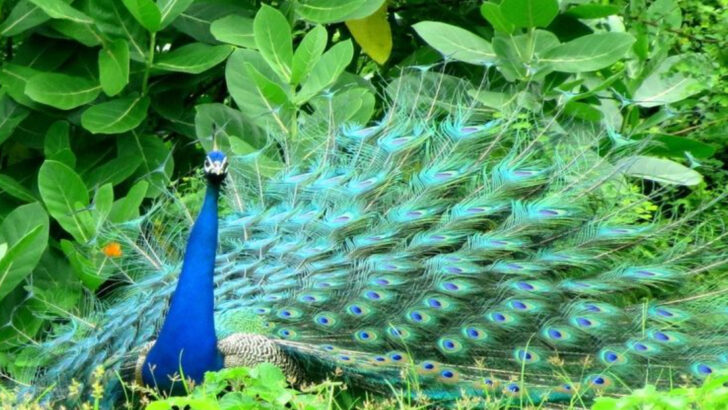Peacocks aren’t just pretty—they’re drama queens in feathers.
They strut like they own the world, shimmer like they swallowed a rainbow, and scream like a banshee when they feel ignored.
But behind all that glam and glitter? Secrets. Strange, wild, jaw-dropping facts that go way beyond those dazzling tail feathers.
Did you know they can fly? That they’ve been symbols of immortality and vanity? Or that their screech might just summon a storm (or at least, warn of one)?
These birds are walking art with a wild side—and we’re about to spill 14 facts that’ll make you look at them with wide-eyed wonder… and maybe a little side-eye.
Ready for feathers, flair, and full-on fabulousness? Let’s go.
Peacock’s Dazzling Feathers
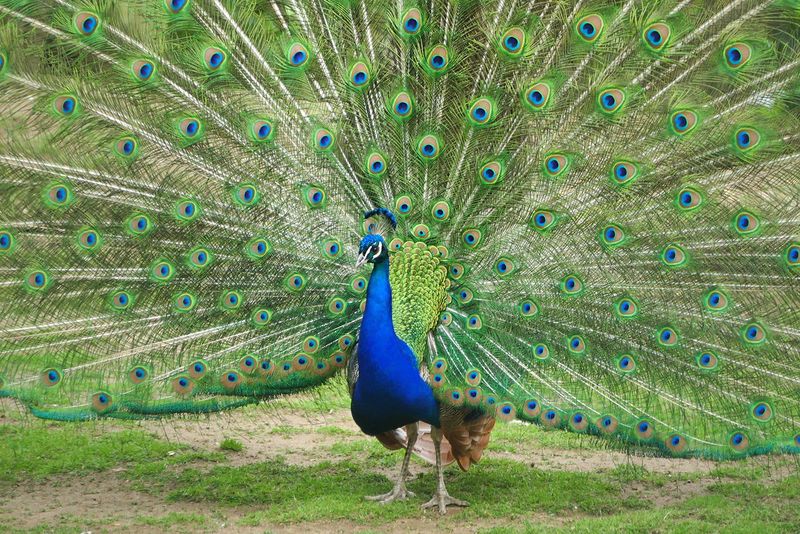
The peacock’s feathers are a masterpiece of nature, shimmering and vibrant. While many admire their beauty, the magic lies in the microscopic structures that reflect light, creating an iridescent effect. This dazzling display is not just for show. Peacocks use their feathers to attract mates, with more eye spots indicating a healthier bird. These feathers are shed and regrown each year, ensuring that the peacock always looks its best. Did you know? Each feather can be up to five feet long! Observing a peacock spreading its feathers is like watching a living rainbow.
Symbol of Immortality

In various cultures, peacocks symbolize immortality and renewal. Ancient myths often feature these birds as divine creatures, capable of rebirth. In Hinduism, the peacock is associated with the goddess Saraswati, representing wisdom and fortune. The bird’s ability to renew its feathers annually reinforces its symbolism of regeneration. The vivid eye-like patterns on the feathers add to its mystique, captivating artists and storytellers alike. This deep cultural symbolism has made the peacock a favored subject in art and literature throughout history.
Peacock’s Loud Call
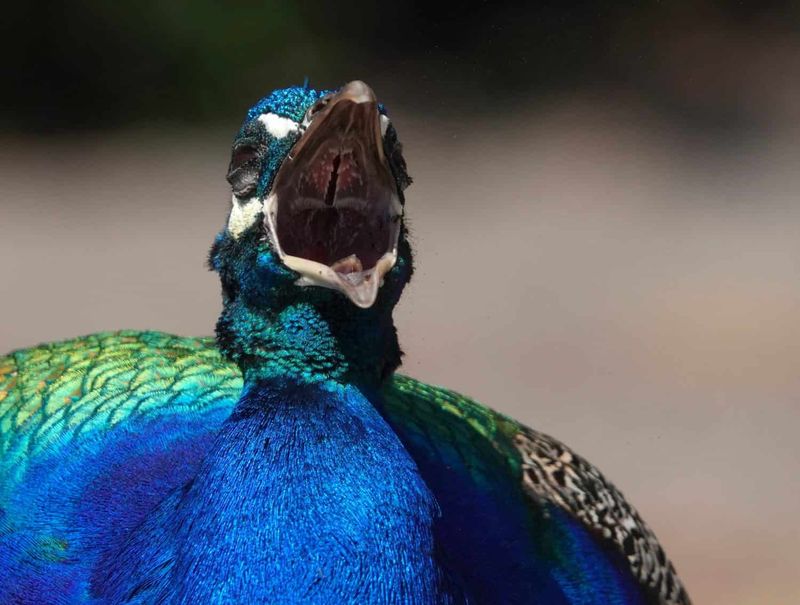
A peacock’s call is as striking as its appearance. The loud, penetrating sound can be heard over long distances, often surprising those unfamiliar with it. This vocalization plays a crucial role in communication, especially during the breeding season. Males call to attract females and assert their presence to rival males. The call is also a warning signal, alerting others to potential threats. Despite their elegance, these birds can be quite noisy, adding an unexpected dimension to their personality. Hearing a peacock call is an experience that resonates with visitors to their habitats.
Natural Pest Controllers

Beyond their beauty, peacocks serve a practical purpose as natural pest controllers. They consume a variety of insects, including pests that may harm crops and gardens. This diet makes them valuable in agricultural settings, where they help maintain ecological balance. Their presence can significantly reduce the need for chemical pesticides, benefiting both the environment and farmers. Watching peacocks roam fields and gardens, hunting insects, showcases their vital role in nature. Their elegant stride belies the important work they’re doing, offering a graceful solution to pest problems.
Peahen’s Subtle Elegance
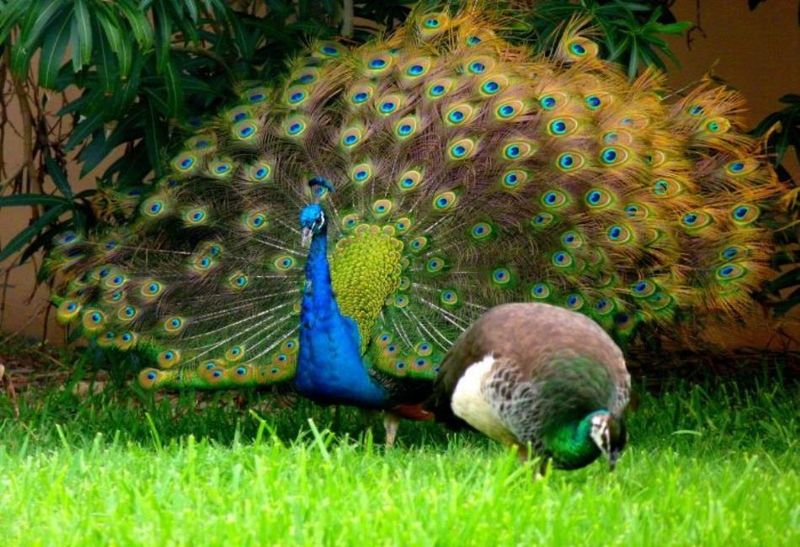
While male peacocks steal the show with their vibrant plumage, female peahens possess a subtle elegance. Their muted colors provide excellent camouflage, protecting them and their young from predators. This understated beauty is equally captivating, reflecting nature’s balance between show and function. Peahens play a critical role in the peacock’s life cycle, choosing mates based on feather quality and displays. Their discerning nature ensures that only the fittest males continue the lineage. Observing a peahen reveals a different kind of beauty, one that emphasizes grace and survival.
Unique Courtship Dance
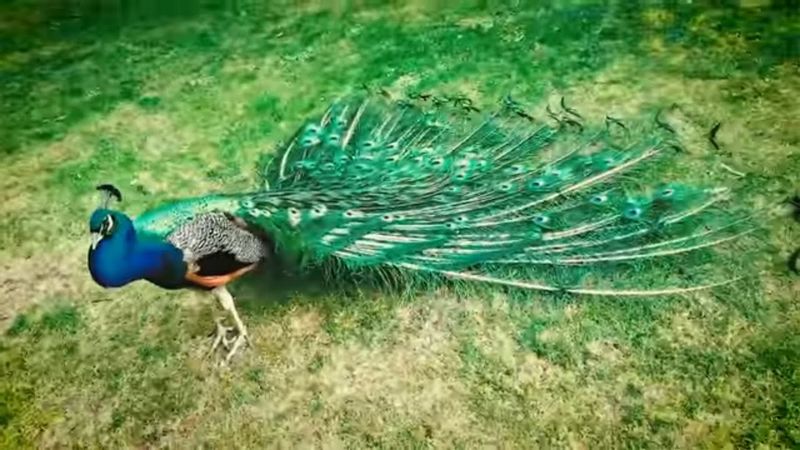
Peacock courtship is a visual spectacle, a dance of color and movement. The male performs an elaborate display, fanning his feathers and shaking them to create a mesmerizing sound. This dance showcases his fitness and allure to potential mates. The rhythm of his movements, combined with the shimmering feathers, creates a breathtaking performance. It’s a ritual that highlights the peacock’s role in the animal kingdom as a creature of beauty and grace. Witnessing this courtship dance is a testament to the wonders of nature’s intricate mating rituals.
Guardians of Sacred Spaces
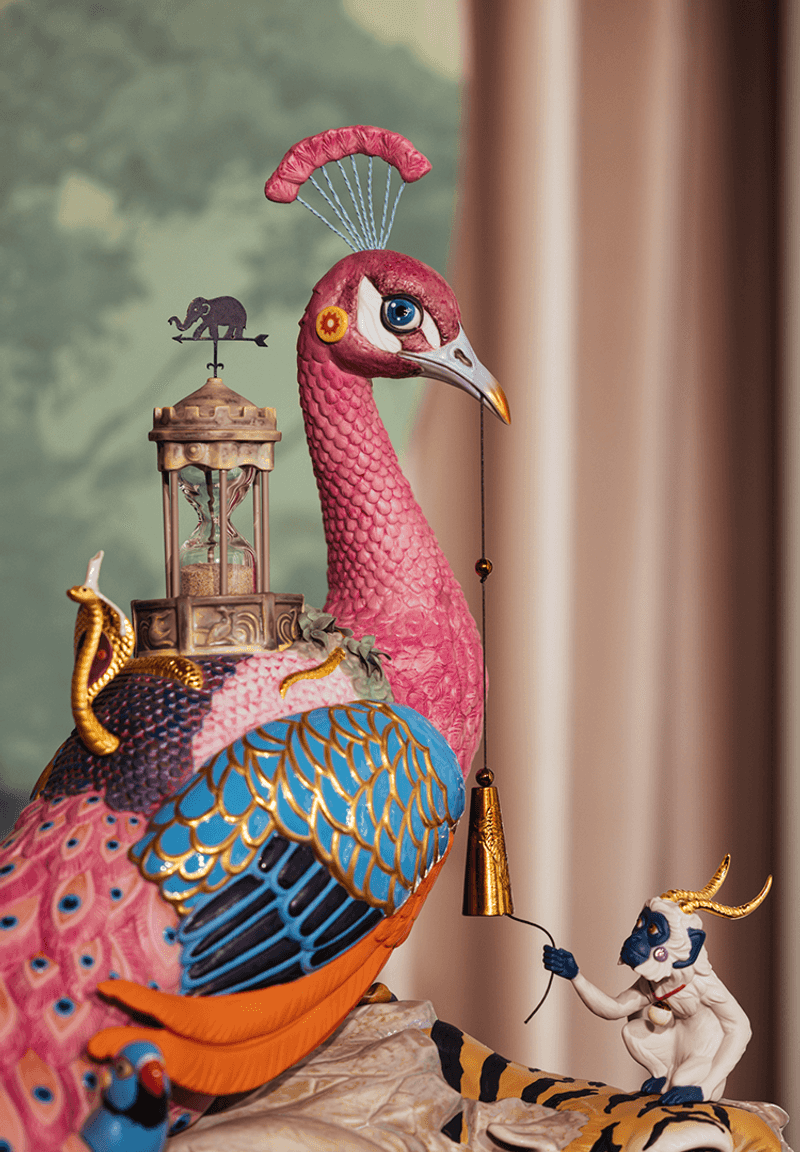
In many cultures, peacocks are revered as protectors of sacred spaces. Their presence in temples and shrines signifies purity and vigilance. The bird’s alert nature and striking appearance make it an ideal guardian, warding off evil spirits. In Buddhist tradition, the peacock symbolizes compassion and openness. Its role as a temple guardian extends beyond the physical, representing spiritual protection. Visiting a temple adorned with peacocks is a journey into a world where nature and spirituality intertwine, reflecting the bird’s timeless role as a sacred sentinel.
Peacock’s Remarkable Vision
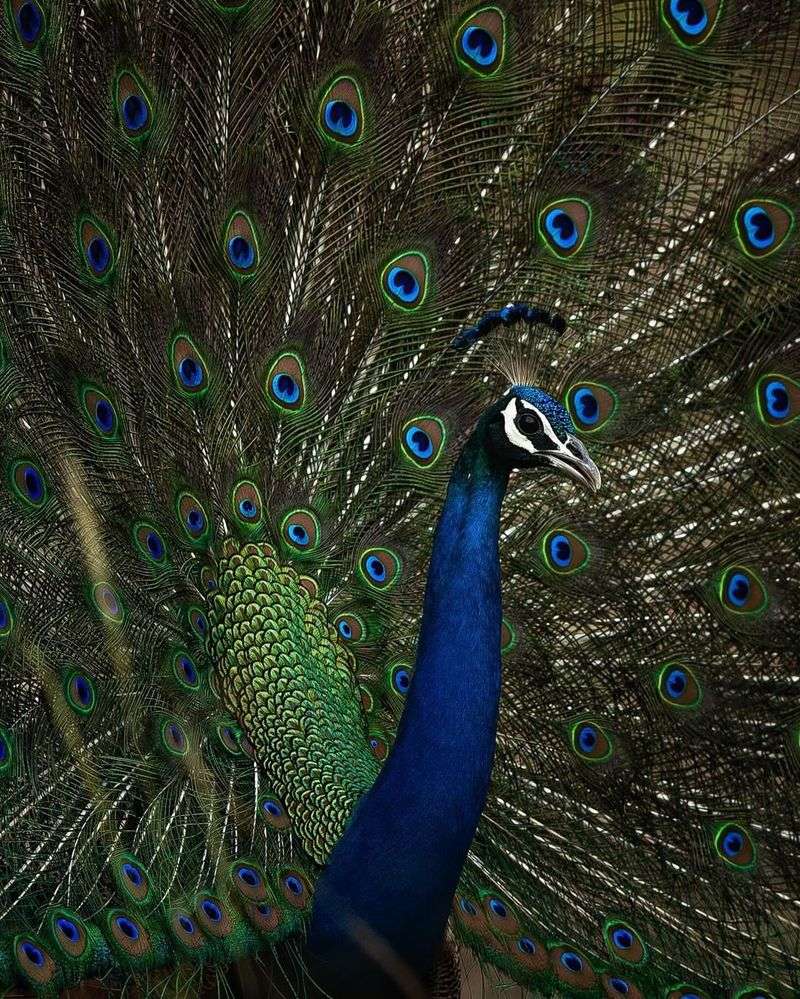
Peacocks possess remarkable vision, allowing them to perceive a range of colors beyond human capability. This enhanced vision aids in spotting predators and selecting mates. Their eyes can detect ultraviolet light, giving them an advantage in their vibrant world. This sensory ability is crucial for survival, influencing their interactions with the environment. The peacock’s eye is not just a symbol of beauty but a tool of perception, essential for navigating their complex social structures. Understanding their vision offers insight into the evolutionary wonders of the animal kingdom.
Peacock’s Cultural Significance

The cultural significance of peacocks spans across continents and centuries. As national birds, symbols in folklore, and subjects in art, they hold a revered place in human history. In India, the peacock is the national bird, embodying beauty and grace. Its image is woven into the fabric of cultural celebrations and religious practices. This bird’s universal appeal lies in its ability to transcend boundaries, connecting people through shared admiration. The peacock’s cultural prominence is a testament to its enduring charm and the inspiration it provides to artists and storytellers.
Peacock’s Role in Ecosystems
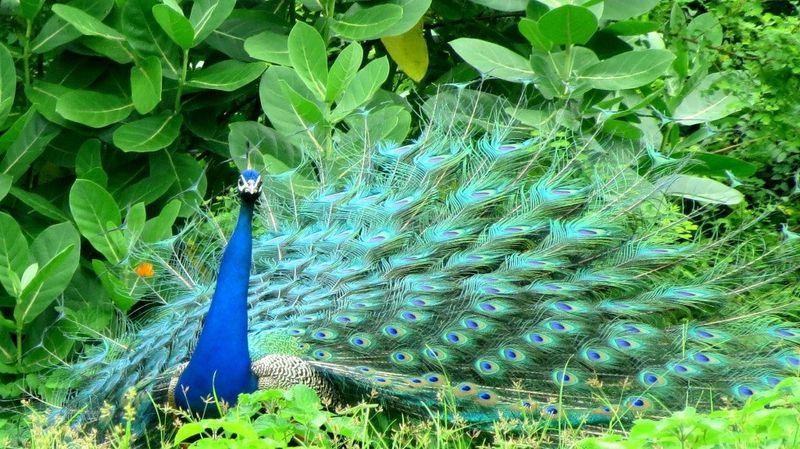
Peacocks play a vital role in their ecosystems, contributing to biodiversity and ecological balance. As omnivores, they help control insect populations while also dispersing seeds through their droppings. This dual role supports plant growth and pest management, illustrating their importance in nature. Their striking presence also attracts other wildlife, fostering a rich and diverse habitat. Observing peacocks in their natural environment reveals their interconnectedness with the ecosystem, highlighting the delicate balance they maintain. Their ecological contributions extend beyond their beauty, showcasing the intricate web of life they support.
Peafowl Family Dynamics
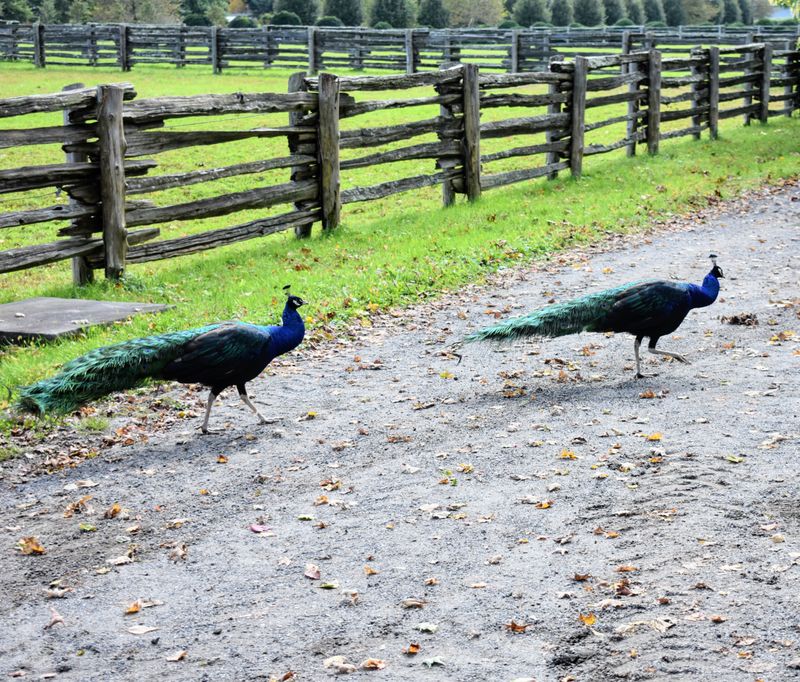
The family dynamics of peafowl are as colorful as their feathers. Male peacocks often guard territories, providing protection for peahens and their chicks. Peahens are attentive mothers, guiding their young through the early stages of life. The chicks, known as peachicks, rely on their parents for warmth and safety. This familial bond is essential for survival, with each member playing a role. The male’s vibrant display not only attracts mates but also deters predators, ensuring the family’s security. Understanding these dynamics provides insight into the social structure of these captivating birds.
Adaptation to Urban Environments
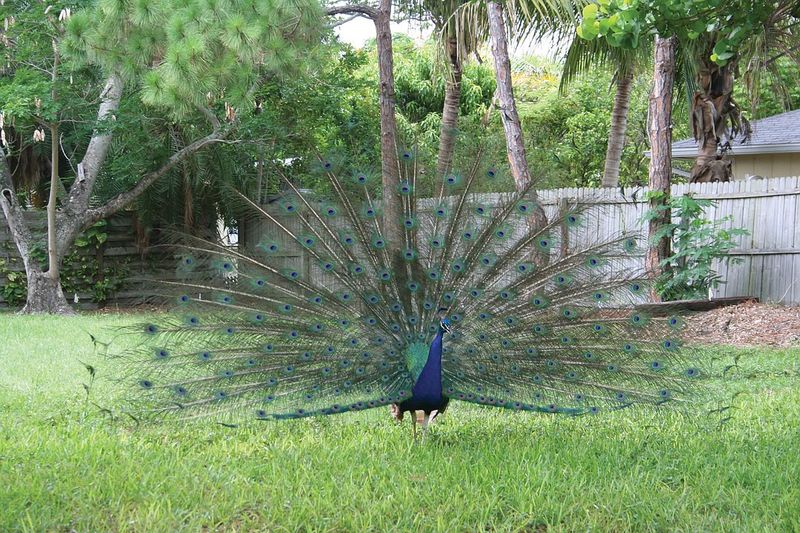
Peacocks have shown remarkable adaptability to urban environments, thriving in city parks and gardens. Their ability to coexist with humans showcases their resilience and versatility. In urban settings, they often become local celebrities, drawing visitors eager to catch a glimpse of their colorful displays. This adaptation highlights their ability to find food and shelter amidst city life, demonstrating a unique blend of wild instincts and urban savvy. Observing peacocks in urban areas reveals their capacity to navigate human-altered landscapes, offering a glimpse into the future of wildlife adaptation.
Peacock Mythology and Folklore
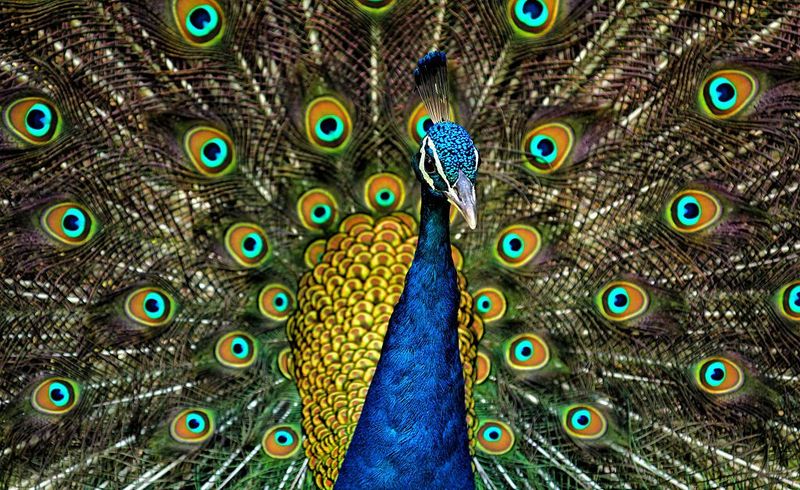
Peacocks have long been featured in mythology and folklore, captivating imaginations with their beauty and symbolism. In Greek mythology, the peacock is associated with Hera, the queen of the gods, symbolizing watchfulness. Folklore from various cultures often depicts peacocks as symbols of pride and nobility. These stories have contributed to the bird’s mystique, embedding it in human storytelling traditions. The peacock’s presence in myths and legends highlights its role as a cultural icon, bridging the natural and supernatural worlds. Exploring these tales reveals the timeless allure of these magnificent birds.
Peacock Conservation Efforts
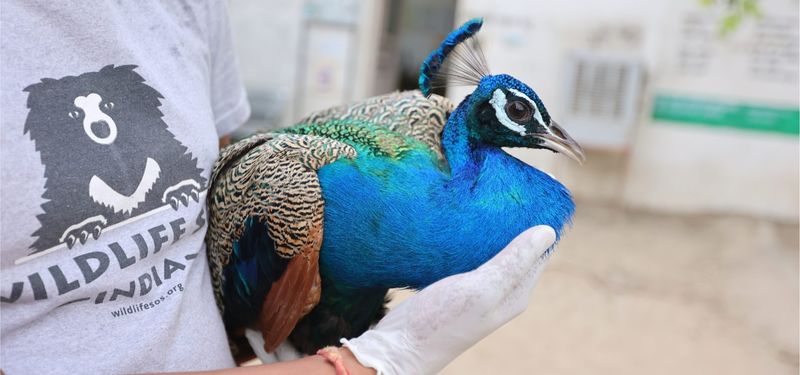
Efforts to conserve peacocks focus on habitat preservation and protection from poaching. These initiatives are crucial for maintaining their populations in the wild. Conservationists work to safeguard their natural habitats, ensuring that peacocks continue to thrive in their native environments. Awareness campaigns highlight the importance of these birds, promoting sustainable practices that benefit both peacocks and their ecosystems. Supporting conservation efforts ensures that future generations can enjoy the splendor of peacocks in the wild. These efforts underscore the need for global cooperation in wildlife preservation, reflecting our shared responsibility.

